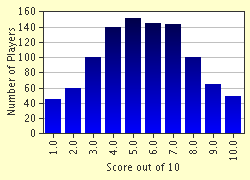Quiz Answer Key and Fun Facts
1. Our tale begins as Officers Albert, Max and Hendrik depart the police station that orbits Earth. As the patrol ship accelerates to relativistic speeds, Officer Hendrik's thoughts turn to his twin brother, Stephen, who has never left Earth. They were born by Caesarean section at exactly the same time. Will they still be the same age when Hendrik returns from his patrol?
2. After rescuing a hapless space cat from an asteroid, our heroes find themselves traveling behind a prefabricated space station being moved to Alpha Centauri. It's a very wide load which seems to occupy three whole lanes, but there are no "WIDE LOAD" stickers or hazard lights, so Officer Max puts on the siren and pulls it over. The driver is insistent he's done nothing wrong: "It's all relative, Officer," he says. "I'm going at the speed limit, 0.7 c, so my load is length-contracted. When I'm going so fast and the road is at rest, the load fits perfectly within the lane." Does Officer Max write him a ticket?
3. As the patrol ship travels along at the brisk pace of 0.7c (that's seven-tenths the speed of light!), Officer Albert (who is new at this) notices that the headlights only seem to reach very nearby sections of road. How fast is the light from the headlights traveling relative to the road?
4. Officer Max is operating the radar gun to look for speeders. He points it at a ship in the next lane over; the gun gives a measurement of 0.6 c relative to the patrol ship, which is moving at 0.7 c relative to the road. If the speed limit is 0.7 c relative to the road, should the officers pull the other ship over and give it a ticket?
5. Our heroes are running late for the next leg of their patrol, so Officer Hendrik, who's driving, applies a constant acceleration. The officers feel this acceleration as 1 g, pointing downward toward the floor. Officers Albert and Max head to the back of the patrol ship for a relaxing game of tennis. What makes the game on the spaceship different from a tennis game on Earth?
6. Officer Max, looking out a window, notices another ship running a red light. The officers immediately turn on their siren and pull the ship over. The pilot protests the ticket: "But officers, I was moving at relativistic speeds toward the light, so the red light was Doppler-shifted to green. I didn't know it was supposed to be red!" Is this a reasonable argument?
7. The patrol has been traveling about an hour without encountering trouble; it's definitely a slow stretch. Officer Albert, driving now, decides to engage cruise control; the ship is now moving at a constant velocity of 0.6 c relative to the road. What phenomenon do the officers experience? Their ship has no artificial gravity.
8. The next item on the patrol's to-do list is a random check of sleep logs at a randomly chosen truck stop. Officer Albert figures he's got a live one when he finds a trucker whose last entry on the sleep log is dated twenty hours ago (station time): truckers are required to sleep at least every 16 hours! But the trucker insists that he's been traveling at 0.6 c until stopping just now, so his time has moved more slowly than station time and he hasn't driven too long at all. Should Officer Albert write him a ticket?
9. Officer Hendrik is also roaming the truck stop, weighing the trucks at rest. This section of highway has a relativistic mass limit of 15 million tons (there are some wormholes that could be damaged by excess mass). The speed limit for trucks is 0.6 c. What is the rest mass limit for trucks on this highway, assuming that they travel at the posted speed limit?
10. "Well, we're almost home," says Officer Max as the patrol draws to an end. They're cruising at 0.5c. When they reach the corner of Einstein and Lorentz, which is eight light-minutes away on the map, they'll need to start slowing down to pull into the station parking lot, but until then they'll maintain their speed. How long, according to the station clock, will it take them to get to Einstein and Lorentz?
Source: Author
CellarDoor
This quiz was reviewed by FunTrivia editor
crisw before going online.
Any errors found in FunTrivia content are routinely corrected through our feedback system.

